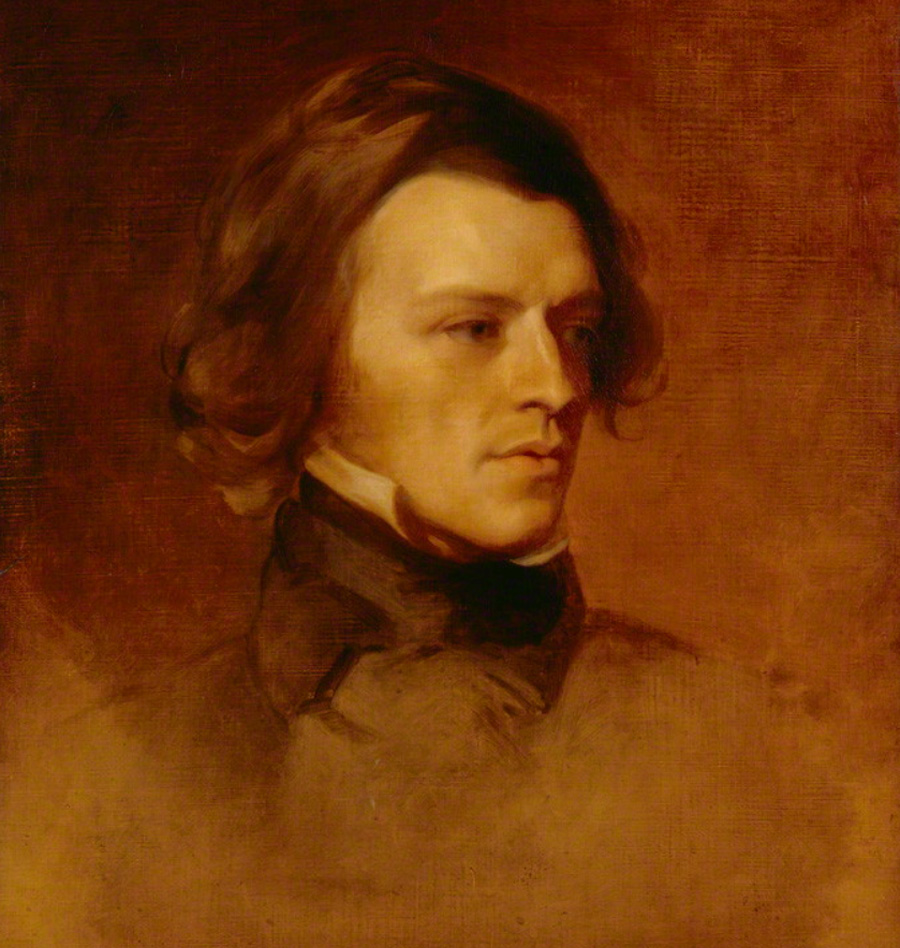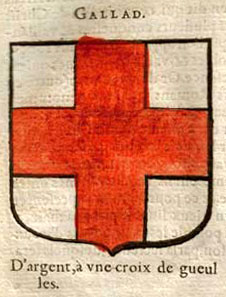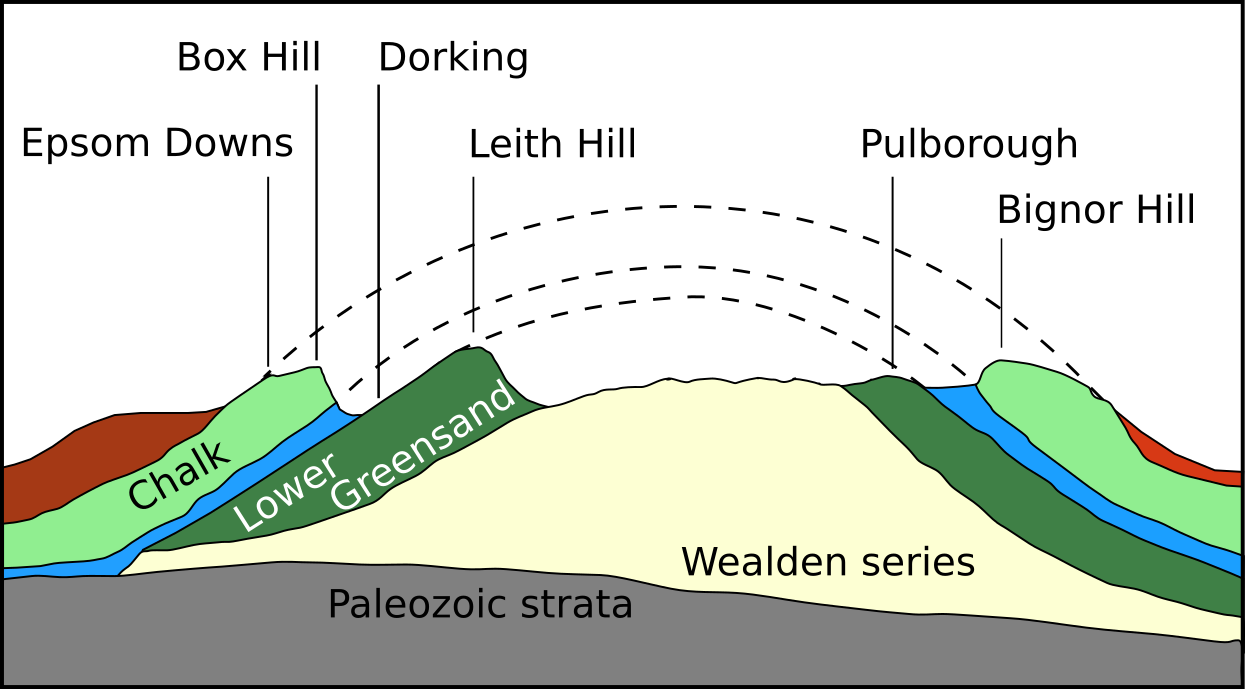|
Sir Galahad (poem)
"Sir Galahad" is a poem written by Alfred Tennyson, 1st Baron Tennyson, and published in his Poems (Tennyson, 1842), 1842 collection of poetry. It is one of his many poems that deal with the Matter of Britain, legend of King Arthur, and describes Galahad experiencing a vision of the Holy Grail. The subject of the poem was later included in "The Holy Grail" section of Tennyson's ''Idylls of the King'', but the latter version depicts Galahad as a pious individual who is grimly determined to fulfill his destiny. ''Sir Galahad'', in contrast, depicts Galahad as proud, and has almost cheerful undertones. Background In 1833, Tennyson's close friend Arthur Hallam died. The death greatly affected both Tennyson and his sister Emily, and he withdrew from society as he slowly dealt with the pain. By mid-summer 1834, they slowly began to participate together in social events once again. On one occasion, Tennyson, Emily, and his other sister Mary were invited to visit friends in Dorking, and t ... [...More Info...] [...Related Items...] OR: [Wikipedia] [Google] [Baidu] |
Alfred Tennyson, 1st Baron Tennyson
Alfred Tennyson, 1st Baron Tennyson (6 August 1809 – 6 October 1892) was an English poet. He was the Poet Laureate during much of Queen Victoria's reign. In 1829, Tennyson was awarded the Chancellor's Gold Medal at Cambridge for one of his first pieces, "Timbuktu". He published his first solo collection of poems, ''Poems, Chiefly Lyrical'', in 1830. "Claribel" and "Mariana", which remain some of Tennyson's most celebrated poems, were included in this volume. Although described by some critics as overly sentimental, his verse soon proved popular and brought Tennyson to the attention of well-known writers of the day, including Samuel Taylor Coleridge. Tennyson's early poetry, with its medievalism and powerful visual imagery, was a major influence on the Pre-Raphaelite Brotherhood. Tennyson also excelled at short lyrics, such as "Break, Break, Break", "The Charge of the Light Brigade", "Tears, Idle Tears", and "Crossing the Bar". Much of his verse was based on classical mythol ... [...More Info...] [...Related Items...] OR: [Wikipedia] [Google] [Baidu] |
Poems (Tennyson, 1842)
''Poems'', by Alfred Tennyson, was a two-volume 1842 collection in which new poems and reworked older ones were printed in separate volumes. It includes some of Tennyson's finest and best-loved poems, such as ''Mariana'', ''The Lady of Shalott'', ''The Palace of Art'', '' The Lotos Eaters'', ''Ulysses'', '' Locksley Hall'', ''The Two Voices'', ''Sir Galahad'', and ''Break, Break, Break''. It helped to establish his reputation as one of the greatest poets of his time. Contents Volume 1 * Claribel * Lilian * Isabel * Mariana * To —— * Madeline * Song—The Owl * Second Song—To the Same * Recollections of the Arabian Nights * Ode to Memory * Song * Adeline * A Character * The Poet * The Poet's Mind * The Dying Swan * A Dirge * Love and Death * The Ballad of Oriana * Circumstance * The Merman * The Mermaid * Sonnet to J. M. K. * The Lady of Shalott * Mariana in the South * Eleanore * The Miller's Daughter * Fatima * Œnone * The Sisters * To —— * The Palace of Art * La ... [...More Info...] [...Related Items...] OR: [Wikipedia] [Google] [Baidu] |
Matter Of Britain
The Matter of Britain is the body of medieval literature and legendary material associated with Great Britain and Brittany and the list of legendary kings of Britain, legendary kings and heroes associated with it, particularly King Arthur. It was one of the three great Western Literary cycle, story cycles recalled repeatedly in medieval literature, together with the Matter of France, which concerned the legends of Charlemagne, and the Matter of Rome, which included material derived from or inspired by classical mythology. History The three "Matters" were first described in the 12th century by French poet Jean Bodel, whose epic ' ("Song of the Saxons") contains the line: The name distinguishes and relates the Matter of Britain from the mythological themes taken from classical antiquity, the "Matter of Rome", and the tales of the Paladins of Charlemagne and their wars with the Moors and Saracens, which constituted the "Matter of France". King Arthur is the chief subject of th ... [...More Info...] [...Related Items...] OR: [Wikipedia] [Google] [Baidu] |
Galahad
Sir Galahad (), sometimes referred to as Galeas () or Galath (), among other versions of his name, is a knight of King Arthur's Round Table and one of the three achievers of the Holy Grail in Arthurian legend. He is the illegitimate son of Sir Lancelot du Lac and Lady Elaine of Corbenic and is renowned for his gallantry and purity as the most perfect of all knights. Emerging quite late in the medieval Arthurian tradition, Sir Galahad first appears in the Lancelot–Grail cycle, and his story is taken up in later works, such as the Post-Vulgate Cycle, and Sir Thomas Malory's '' Le Morte d'Arthur''. Origins The story of Galahad and his quest for the Holy Grail is a relatively late addition to the Arthurian legend. Galahad does not feature in any romance by Chrétien de Troyes, or in Robert de Boron's Grail stories, or in any of the continuations of Chrétien's story of the mysterious castle of the Fisher King. He first appears in a 13th-century Old French Arthurian epic, the ... [...More Info...] [...Related Items...] OR: [Wikipedia] [Google] [Baidu] |
Holy Grail
The Holy Grail (french: Saint Graal, br, Graal Santel, cy, Greal Sanctaidd, kw, Gral) is a treasure that serves as an important motif in Arthurian literature. Various traditions describe the Holy Grail as a cup, dish, or stone with miraculous healing powers, sometimes providing eternal youth or sustenance in infinite abundance, often guarded in the custody of the Fisher King and located in the hidden Grail castle. By analogy, any elusive object or goal of great significance may be perceived as a "holy grail" by those seeking such. A "grail" (Old French: ''graal'' or ''greal''), wondrous but not unequivocally holy, first appears in ''Perceval, the Story of the Grail'', an unfinished chivalric romance written by Chrétien de Troyes around 1190. Chrétien's story inspired many continuations, translators and interpreters in the later-12th and early-13th centuries, including Wolfram von Eschenbach, who perceived the Grail as a stone. The Christian, Celtic or possibly other orig ... [...More Info...] [...Related Items...] OR: [Wikipedia] [Google] [Baidu] |
Idylls Of The King
''Idylls of the King'', published between 1859 and 1885, is a Literature cycle, cycle of twelve narrative poems by the English poet Alfred, Lord Tennyson (1809–1892; Poet Laureate from 1850) which retells the legend of King Arthur, his knights, his love for Guinevere and her tragic betrayal of him, and the rise and fall of Arthur's kingdom. The whole work recounts Arthur's attempt and failure to lift up mankind and create a perfect kingdom, from his coming to power to his death at the hands of the traitor Mordred. Individual poems detail the deeds of various knights, including Lancelot, Geraint, Galahad, and Sir Balin, Balin and Sir Balan, Balan, and also Merlin and the Lady of the Lake. There is little transition between Idylls, but the central figure of Arthur links all the stories. The poems were dedicated to the late Albert, Prince Consort. The ''Idylls'' are written in blank verse. Tennyson's descriptions of nature are derived from observations of his own surroundings, ... [...More Info...] [...Related Items...] OR: [Wikipedia] [Google] [Baidu] |
Arthur Hallam
Arthur Henry Hallam (1 February 1811 – 15 September 1833) was an English poet, best known as the subject of a major work, '' In Memoriam'', by his close friend and fellow poet Alfred Tennyson. Hallam has been described as the ''jeune homme fatal'' (French for "doomed young man") of his generation. Early life and education Hallam was born in London, son of the historian Henry Hallam. He attended school at Eton, where he met the future prime minister, William Ewart Gladstone. Hallam was an important influence on Gladstone, introducing him to Whiggish ideas and people. Other friends included James Milnes Gaskell. After leaving Eton in 1827 Hallam travelled on the continent with his family, and in Italy he became inspired by its culture and fell in love with an English beauty, Anna Mildred Wintour, who inspired eleven of his poems. In October 1828, Hallam went up to Trinity College, Cambridge, where he met and befriended Tennyson. As Christopher Ricks observes, 'The friendship of ... [...More Info...] [...Related Items...] OR: [Wikipedia] [Google] [Baidu] |
Dorking
Dorking () is a market town in Surrey in South East England, about south of London. It is in Mole Valley District and the council headquarters are to the east of the centre. The High Street runs roughly east–west, parallel to the Pipp Brook and along the northern face of an outcrop of Lower Greensand. The town is surrounded on three sides by the Surrey Hills Area of Outstanding Natural Beauty and is close to Box Hill and Leith Hill. The earliest archaeological evidence of human activity is from the Mesolithic and Neolithic periods, and there are several Bronze Age bowl barrows in the local area. The town may have been the site of a staging post on Stane Street during Roman times, however the name 'Dorking' suggests an Anglo-Saxon origin for the modern settlement. A market is thought to have been held at least weekly since early medieval times and was highly regarded for the poultry traded there. The Dorking breed of domestic chicken is named after the town. The loca ... [...More Info...] [...Related Items...] OR: [Wikipedia] [Google] [Baidu] |
Leith Hill
Leith Hill in southern England is the highest summit of the Greensand Ridge, approximately southwest of Dorking, Surrey and southwest of Charing Cross, central London. It reaches above mean sea level, above sea level, and is the second highest point in southeast England, after Walbury Hill in southwest Berkshire, (which is high). Leith Hill is the highest ground for . Four areas of woodland surrounding the hill comprise the Leith Hill SSSI, Leith Hill Site of Special Scientific Interest, although the summit is excluded from this designation. The nearest railway station is Holmwood railway station, Holmwood station, to the east, served by Southern (train operating company), Southern trains to London Victoria station, London Victoria. Leith Hill Tower On the summit of Leith Hill is an 18th-century Gothic tower. In 1764–65 Richard Hull of nearby Leith Hill Place built "Prospect House", later to become known as Leith Hill Tower, with the intention of raising the hill abo ... [...More Info...] [...Related Items...] OR: [Wikipedia] [Google] [Baidu] |
1842 Poems
__NOTOC__ Year 184 ( CLXXXIV) was a leap year starting on Wednesday (link will display the full calendar) of the Julian calendar. At the time, it was known as the Year of the Consulship of Eggius and Aelianus (or, less frequently, year 937 ''Ab urbe condita''). The denomination 184 for this year has been used since the early medieval period, when the Anno Domini calendar era became the prevalent method in Europe for naming years. Events By place China * The Yellow Turban Rebellion and Liang Province Rebellion break out in China. * The Disasters of the Partisan Prohibitions ends. * Zhang Jue leads the peasant revolt against Emperor Ling of Han of the Eastern Han Dynasty. Heading for the capital of Luoyang, his massive and undisciplined army (360,000 men), burns and destroys government offices and outposts. * June – Ling of Han places his brother-in-law, He Jin, in command of the imperial army and sends them to attack the Yellow Turban rebels. * Winter – Zha ... [...More Info...] [...Related Items...] OR: [Wikipedia] [Google] [Baidu] |
Narrative Poems
Narrative poetry is a form of poetry that tells a story, often using the voices of both a narrator and characters; the entire story is usually written in metered verse. Narrative poems do not need rhyme. The poems that make up this genre may be short or long, and the story it relates to may be complex. It is normally dramatic, with various characters. Narrative poems include all epic poetry, and the various types of "lay", most ballads, and some idylls, as well as many poems not falling into a distinct type. Some narrative poetry takes the form of a novel in verse. An example of this is ''The Ring and the Book'' by Robert Browning. In terms of narrative poetry, romance is a narrative poem that tells a story of chivalry. Examples include the ''Romance of the Rose'' or Tennyson's ''Idylls of the King''. Although those examples use medieval and Arthurian materials, romances may also tell stories from classical mythology. Sometimes, these short narratives are collected into interrel ... [...More Info...] [...Related Items...] OR: [Wikipedia] [Google] [Baidu] |






